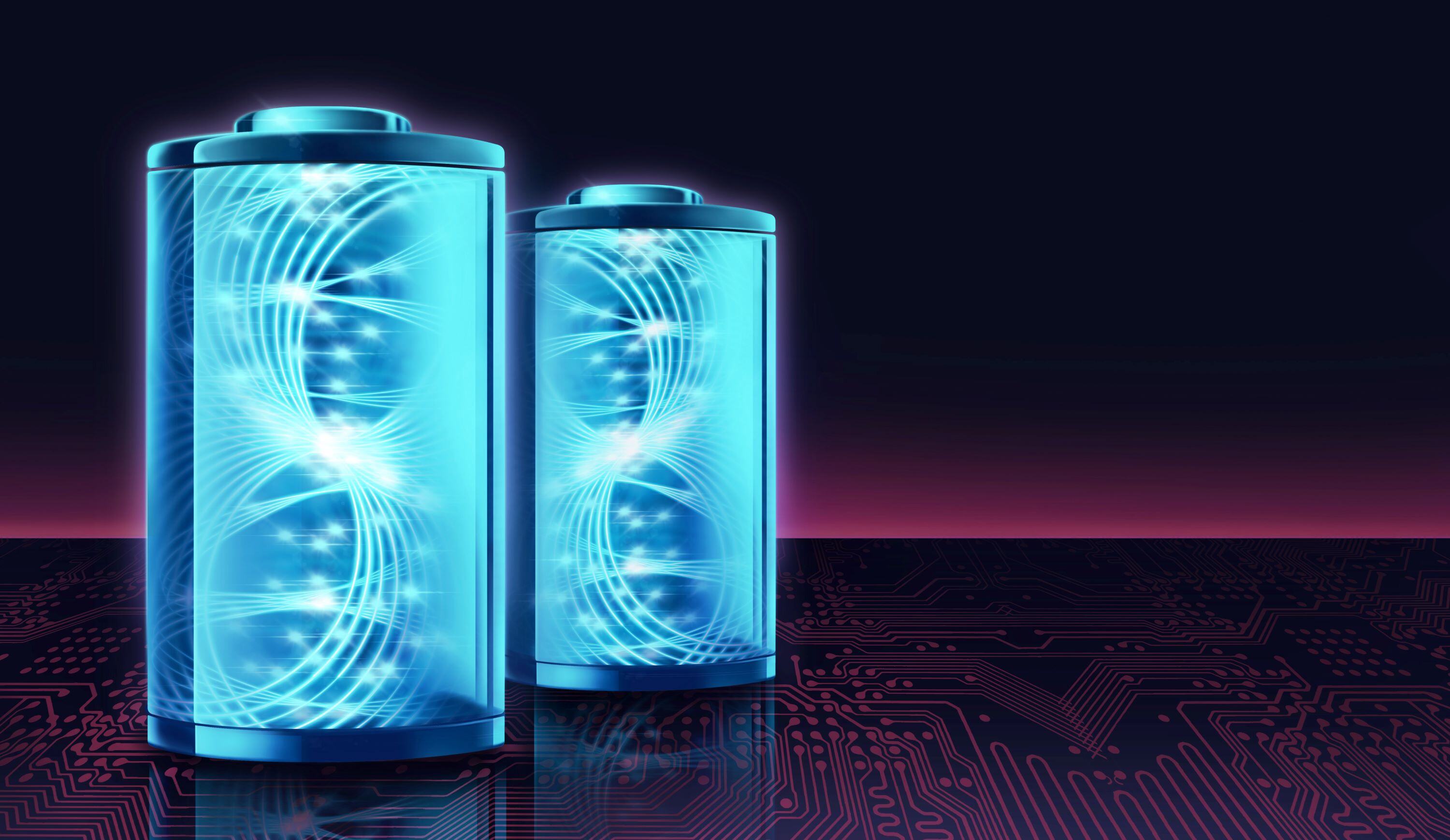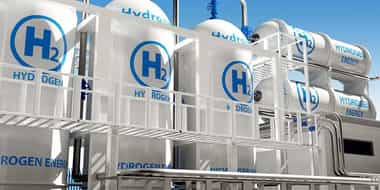
May 1, 2025
Blog Energy & Sustainability Top 7 Trends Behind Lithium-Ion Battery Market Growth
From cars that charge instead of refuel to homes powered by the sun, lithium-ion batteries are quietly transforming the way the world works. Their ability to store energy efficiently, recharge quickly, and power everything from electric vehicles to portable devices has made them essential to today’s energy revolution. As industries strive for cleaner, smarter, and more connected solutions, lithium-ion batteries have become not just a component but a driving force behind global innovation and sustainability.
The lithium-ion battery market is experiencing significant growth. According to a report by BCC Research, the market size is expected to increase from $117.8 billion in 2024 to $221.7 billion by 2029, representing a compound annual growth rate (CAGR) of 13.5% during this period. This upward trend is driven by rising demand in the transportation, energy storage, and electronics sectors.
So, what’s fueling this high-voltage growth? Let’s explore 7 major trends and breakthroughs making lithium-ion batteries one of the most electrifying sectors of the decade.
The global market for lithium-ion battery (LIB) is expected to grow from $117.8 billion in 2024 and is projected to reach $221.7 billion by the end of 2029, at a compound annual growth rate (CAGR) of 13.5% during the forecast period of 2024 to 2029.
Electric vehicles (EVs) are a major force driving the growth of the lithium-ion battery industry. As more individuals and businesses opt for EVs instead of traditional fuel-powered cars, the demand for high-performance batteries is steadily increasing.
Governments are also supporting this transition through subsidies, incentives, and stricter emissions regulations. This global movement has encouraged automakers such as Tesla, BYD, and Volkswagen to scale up battery production and secure long-term supply chains.
In countries like India and China, public transport fleets, delivery services, and two-wheeled vehicles are also making the switch to electric, further expanding the demand for lithium-ion batteries.
As the adoption of solar and wind energy increases, reliable energy storage has become essential. Lithium-ion batteries are now being used to store renewable energy, allowing it to be utilized during cloudy days, at night, or during times of peak demand.
To enhance grid stability and prevent blackouts, countries are investing in large-scale battery storage systems. Companies such as Fluence Energy and Tesla Energy are developing significant projects across the U.S., Europe, and Asia.
These systems are contributing to making renewable energy more consistent and accessible.
Governments around the world are implementing new policies to support battery manufacturing and clean energy. These policies include financial incentives for electric vehicle (EV) buyers, funding for local battery plants, and recycling programs.
From the EU’s Green Deal to the U.S. Inflation Reduction Act, significant investments are being made to strengthen local battery supply chains, reduce carbon emissions, and promote green mobility. For instance:
Recent advancements in battery chemistry are enhancing the safety, longevity, and efficiency of lithium-ion batteries. Two widely used types include:
Automakers such as Ford and Rivian are choosing battery chemistries based on the specific needs of their vehicle models. Some prioritize range and performance, while others focus on affordability and stability.
As millions of batteries are used each year, recycling has become essential. Instead of allowing old batteries to accumulate, companies are discovering methods to recover and reuse valuable materials such as lithium, cobalt, and nickel.
Startups like Redwood Materials (founded by a former Tesla executive) and Li-Cycle are developing technologies to extract valuable materials from used batteries and reintegrate them into the supply chain.
Additionally, there is a growing market for second-life batteries, where used electric vehicle (EV) batteries are repurposed for applications like solar storage and backup power.
To meet the growing demand for batteries, manufacturers are constructing large production facilities known as gigafactories. These plants are specifically designed to produce batteries on a large scale, making them more affordable and widely available.
By 2029, more than 400 gigafactories are expected to be operational across China, the U.S., and Europe. These facilities are contributing to job creation, cost reduction, and the acceleration of the global energy transition.
Lithium-ion batteries are now widely used beyond just cars and electronic devices. Today, they power a diverse range of applications, including medical devices, aerospace systems, drones, marine equipment, and smart home solutions.
As technology continues to advance toward portability and electrification, batteries are driving innovation across various sectors. The rise of wearables, wireless tools, and connected devices is generating completely new demands.
New battery designs are significantly reducing charging times. Technologies such as silicon anodes and advanced electrolytes enable electric vehicles (EVs) and devices to charge in minutes instead of hours.
Advances in cell chemistry, particularly with nickel manganese cobalt (NMC) and solid-state designs, are increasing energy storage capacity without enlarging battery size. This development results in longer ranges for EVs and improved performance for portable devices.
Research on solid-state batteries is progressing rapidly. These batteries replace liquid electrolytes with solid materials, providing improved safety, greater energy capacity, and a reduced risk of overheating or fire.
Advancements in battery management systems (BMS) and material coatings are extending the life cycle of lithium-ion batteries, making them more durable and cost-effective over time
Modern batteries are now designed with improved thermal regulation systems, which decrease the risk of overheating and enhance performance in extreme temperatures.
New-generation lithium-ion batteries are being combined with AI-powered monitoring systems. These systems enable predictive maintenance, real-time performance tracking, and safer usage across various applications.
The lithium ion battery market is entering a phase of high growth, fueled by increasing demand in electric vehicles, renewable energy, and portable electronics. With robust government support, significant global investments, and continuous technological advancements, the market is on track to reach an estimated value of $221.7 billion by 2029. As adoption continues to expand, lithium-ion batteries will play a crucial role in shaping the future of clean energy and innovation.
Consider becoming a member of the BCC Research library and gain access to our full catalog of market research reports in your industry. Not seeing what you are looking for? We offer custom solutions too, including our new product line: Custom Intelligence Services.
Contact us today to find out more.

Karishma Arora is an Assistant Team Lead in Marketing Operations at BCC Research, with a master's degree in commerce. She is a passionate marketer with a knack for creativity and data-driven strategies.

Electrical switches—devices that control the flow of electricity—are the backbon...

As the world accelerates toward net-zero emissions, hydrogen, and ammonia have e...

Hydrogen technology is widely used across industries like glass, fertilizer, met...

We are your trusted research partner, providing actionable insights and custom consulting across life sciences, advanced materials, and technology. Allow BCC Research to nurture your smartest business decisions today, tomorrow, and beyond.
Contact UsBCC Research provides objective, unbiased measurement and assessment of market opportunities with detailed market research reports. Our experienced industry analysts assess growth opportunities, market sizing, technologies, applications, supply chains and companies with the singular goal of helping you make informed business decisions, free of noise and hype.